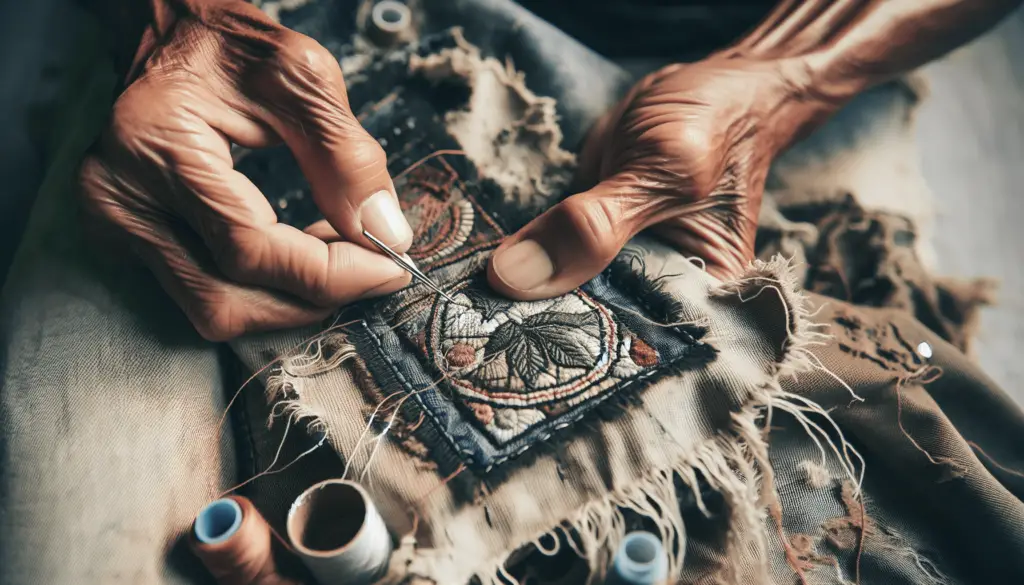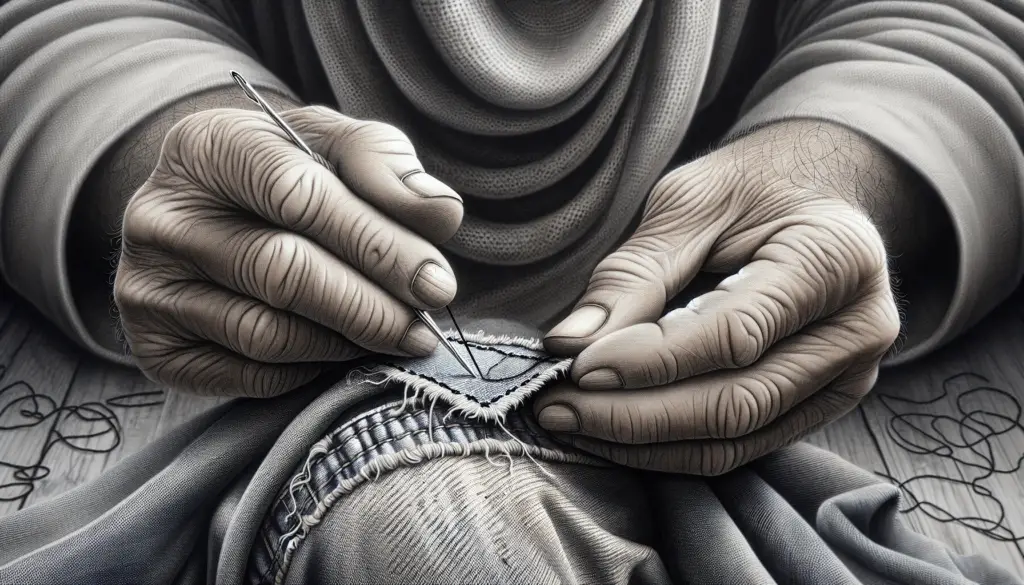Crafting Sustainable Clothing And Footwear For Long-Term Survival
Are you interested in learning how to craft sustainable clothing and footwear for long-term survival in the wilderness? The key to surviving in the wild is not only having the necessary survival skills, but also having the right clothing and footwear to protect you from the elements and keep you safe. In this article, we will explore the importance of sustainable clothing and footwear in survival situations, as well as provide you with tips on how to craft your own sustainable gear.
Importance of Sustainable Clothing and Footwear
When faced with a survival situation in the wilderness, having the right clothing and footwear can mean the difference between life and death. Sustainable clothing and footwear are essential for long-term survival as they are durable, environmentally friendly, and made from materials that can withstand harsh conditions. By crafting sustainable gear, you are ensuring that you have the necessary protection and comfort to survive in the wild.
Durability
One of the most important aspects of sustainable clothing and footwear is durability. In survival situations, your gear will be put through rigorous wear and tear, so it is crucial to have clothing and footwear that can withstand constant use and exposure to the elements. Sustainable materials such as hemp, bamboo, and organic cotton are known for their durability and longevity, making them ideal choices for crafting survival gear.
Crafting your clothing and footwear using sustainable materials will ensure that your gear lasts longer and can withstand the challenges of the wilderness. By investing in durable and long-lasting materials, you are setting yourself up for long-term survival success.
Environmental Friendliness
In addition to durability, sustainable clothing and footwear are also environmentally friendly. Choosing materials that are ethically sourced and produced helps reduce the environmental impact of your gear. By opting for sustainable options, you are supporting eco-friendly practices and reducing your carbon footprint while still having reliable gear for survival situations.
Crafting your own sustainable clothing and footwear allows you to be mindful of the environment and make conscious choices that benefit both you and the planet. By prioritizing sustainability in your gear, you are contributing to a healthier ecosystem and promoting sustainable practices in the wild.
Crafting Sustainable Clothing
Crafting sustainable clothing for long-term survival requires careful consideration of materials, design, and functionality. Whether you are making clothing for protection from the elements or for camouflage in the wilderness, choosing sustainable materials and techniques is essential. Here are some tips on how to craft sustainable clothing for survival scenarios:
Material Selection
When crafting sustainable clothing, it is important to choose materials that are durable, breathable, and weather-resistant. Natural fibers such as hemp, organic cotton, and bamboo are excellent choices for sustainable clothing as they are strong, versatile, and environmentally friendly. These materials offer comfort, protection, and functionality in the wild, making them ideal for crafting survival gear.
By selecting high-quality and sustainable materials for your clothing, you are ensuring that your gear performs well in various conditions and lasts longer. Investing in durable fabrics that are eco-friendly helps you create clothing that is both reliable and sustainable for long-term survival.
Design and Construction
The design and construction of your clothing play a significant role in its functionality and durability. When crafting sustainable clothing for survival, consider the purpose of the garment, the fit, and the construction techniques that will make it long-lasting. Reinforced seams, adjustable closures, and strategic reinforcements are essential elements to consider when designing gear for survival situations.
Crafting your clothing with attention to detail and functionality ensures that your gear can withstand the demands of the wilderness. By incorporating thoughtful design elements and quality construction, you are creating sustainable clothing that is practical, versatile, and reliable for long-term survival in the wild.
Layering System
A layering system is crucial for staying comfortable and protected in the outdoors. When crafting sustainable clothing for survival, consider implementing a layering system that consists of base layers, insulating layers, and outer layers. This system allows you to adjust your clothing based on weather conditions, activity level, and temperature changes, providing you with versatility and adaptability in the wild.
Crafting clothing that can be layered allows you to regulate your body temperature, moisture levels, and protection from the elements effectively. By incorporating a layering system into your survival gear, you are ensuring that you are prepared for various scenarios and can stay comfortable and safe in challenging conditions.

Crafting Sustainable Footwear
Crafting sustainable footwear for long-term survival is essential for protecting your feet, providing stability, and ensuring mobility in the wild. Sustainable footwear should be durable, supportive, and weather-resistant to withstand the demands of the wilderness. Here are some tips on how to craft sustainable footwear for survival situations:
Footwear Design
When crafting sustainable footwear, it is important to consider the design and structure of the shoes or boots. Choose a design that offers stability, support, and protection for your feet while allowing for natural movement and flexibility. Ankle support, tread patterns, and breathable materials are key elements to consider when designing sustainable footwear for survival scenarios.
Crafting footwear that is well-designed and functional ensures that your feet are properly protected and comfortable in the wilderness. By focusing on the design of your footwear, you are creating gear that enhances your mobility, stability, and overall performance in survival situations.
Sole Construction
The construction of the soles of your sustainable footwear is crucial for grip, traction, and durability. When crafting footwear for long-term survival, opt for soles that are made from sustainable materials such as recycled rubber or natural rubber. These materials offer excellent grip, shock absorption, and traction on various terrains, making them ideal for crafting durable and reliable footwear for the wild.
Crafting footwear with high-quality soles ensures that you have the necessary grip and stability to navigate challenging terrain and conditions. By paying attention to the construction of your shoe soles, you are creating sustainable footwear that enhances your safety, mobility, and performance in the outdoors.
Weather Resistance
Weather-resistant footwear is essential for protecting your feet from the elements and keeping them dry and comfortable. Choose sustainable materials that are water-resistant, breathable, and insulating to ensure that your feet stay warm and dry in all weather conditions. Water-resistant fabrics, moisture-wicking liners, and weatherproof treatments are essential elements for crafting sustainable footwear that can withstand rain, snow, or wet conditions.
Crafting weather-resistant footwear allows you to keep your feet dry, warm, and comfortable in the wilderness, reducing the risk of blisters, frostbite, and other foot-related issues. By prioritizing weather resistance in your footwear, you are ensuring that your feet are protected and supported in challenging environments.
Conclusion
Crafting sustainable clothing and footwear for long-term survival in the wild is essential for ensuring your comfort, protection, and safety. By choosing high-quality and environmentally friendly materials, designing functional and durable gear, and crafting weather-resistant and supportive clothing and footwear, you are preparing yourself for survival scenarios in the wilderness. Whether you are an outdoor enthusiast, a survivalist, or someone looking to enhance their wilderness skills, investing in sustainable gear is a practical and responsible choice for long-term survival success. Start crafting your sustainable clothing and footwear today and embark on your next wilderness adventure with confidence and resilience.

